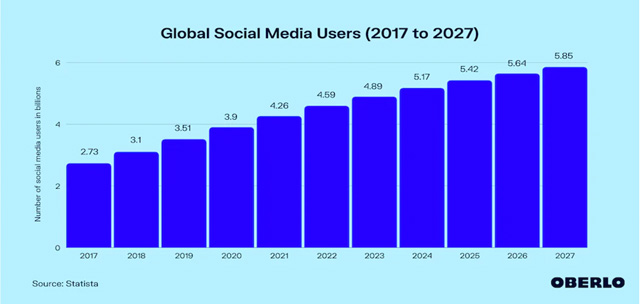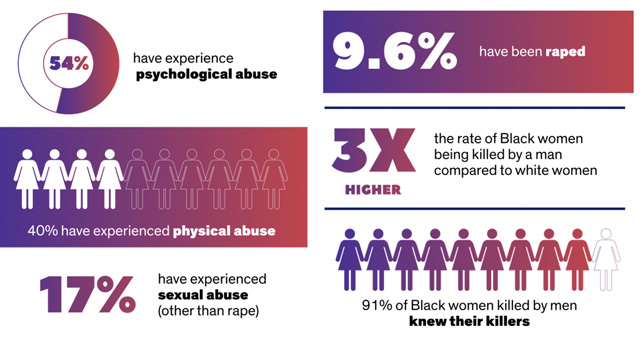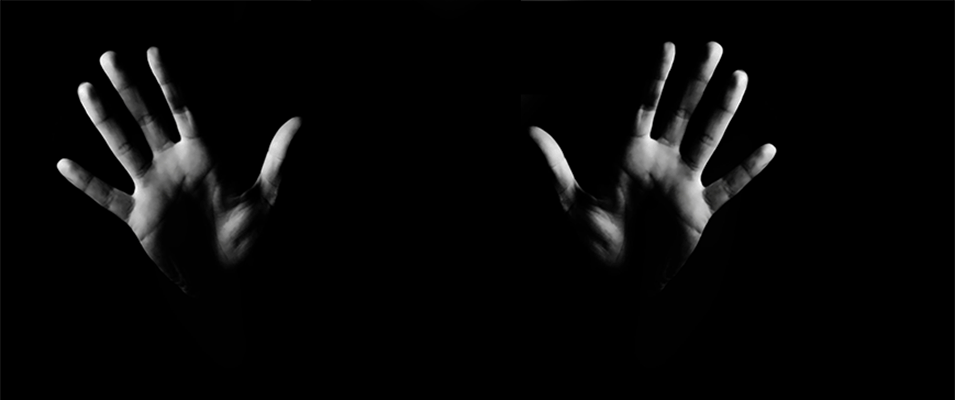By Elizabeth Perry
Social media is often used as an online distraction from the real world and its problems but for some women suffering from domestic violence, these outlets exacerbate their suffering.
Mary, a 22-year-old African-American domestic violence survivor, was an avid social media user. To her, it was a refuge until it wasn’t. “My abuse followed me online, where my ex-boyfriend and his friends would harass me on Instagram and Discord, and older white men would join in,” she said. “They would DM me and make rude posts and comments, claiming that I was ‘worthless,’ a ‘whore,’ and that I got what I ‘deserved.’ For a while, I even got death threats.”
According to Statista, there are 4.59 billion social media users worldwide as of 2022. The group that spends the most overall time on social media is females between the ages of 16 and 24 (an average of 3 hours and 13 minutes a day), reports Hootsuite.

A study done by the artificial intelligence company Element AI, found that an abusive or problematic tweet was sent every 30 seconds.
Domestic violence is a significant threat to Black women according to the Institute for Women’s Policy Research (IWPR), which says that more than 40% will experience it in their lifetime.

Credit: Women’s Leadership and Resources Center at University of Illinois Chicago (UIC)
The most common types of domestic violence experienced by Black women are psychological (54%) and physical (40%). Psychological abuse, refers to intimidation tactics, humiliation, coercion, or insults, and physical abuse, refers to any type of bodily injury, such as slapping, kicking, or choking.
A recent analysis from the Economist Intelligence Unit, said that out of 4,500 women interviewed in 45 countries, 85% of them have experienced or witnessed online abuse. This online abuse and harassment often continues offline.
Online harassment is an extremely common phenomenon amongst Black women. According to Color Lines, Black women are more likely than white women to be disproportionately targeted.
Cecily Johnson, director of strategic initiatives at the Domestic Violence Network, said the consequences for Black women are dire. “Women have always been given the bitter end of the stick,” Johnson said. “Tie in social media, and high volumes of violence in the media and you have a catastrophe.”
Johnson says exposure to violence in television, movies, video games, and music at a young age desensitizes people to its impact. “With technology, that violence has been transferred and rationalized online and in social media,” said Johnson. “We have familiarized ourselves with it, and often feel the need to practice that violence on whatever or whoever we can.”
The American Academy of Pediatrics, explains that a child’s exposure to violent media results in, “increased aggressive thoughts, angry feelings, physiologic arousal, hostile appraisals, aggressive behavior, and a desensitization to violence and a decrease in prosocial behavior.” Such behavior, later, follows those children into adulthood, shifting how they approach romantic, sexual, and regular day to day interactions and relationships.
One example of such familiarization can be found in Jamala Davis’ battle with domestic violence. Davis, a 23-year-old domestic violence survivor, said violent behavior was a part of “growing up.”
Davis said that she was verbally abused for years at home, but didn’t realize it was abuse until later. To her, the at-home abuse was “normal banter,” from her Black family. It was “how they spoke to one another, how they showed they cared.”
When she got into her first relationship, that abuse continued. “I never truly understood the term abuse,” she said. “I knew wrong from right and good from bad, but not when it came to relationships, especially based on how relationships were shown at home and online,” she said.
Davis, like Mary, experienced harassment on social media, except Davis’ abuse was on the popular app TikTok. She explained that she posted a video about her story, and that it quickly went viral. However, instead of receiving support and compassion from her online peers, she was met with “angry men” and even “angrier women.”
“I think what surprised me the most was that the women were just as mean as the men,” she said. “It hurt more coming from them, especially since there’s the whole, ‘Women have to stick together’ motto. They thought that I was a ‘terrible girlfriend’ because I put his business out there. That I was ‘hurting him’ more than he hurt me.”
Embarrassed and appalled, Davis deleted the post and her entire online presence. “That’s just not something I can get over,” she said. “It’s better that I avoid social media altogether. It’s safer for my mental health anyways.”
CEO and President of the National Coalition Against Domestic Violence (NCADV) Ruth Glenn said, “By posting about a behavior, the victim is exercising control over the situation, and anytime you exercise control, you risk escalating.”
Social media apps have anti-bullying policies and those who participate in such actions are usually punished, by being suspended from commenting for an amount of time, by having their account suspended, or in more severe cases, by having their account permanently deleted.
Instagram especially, has a zero-bullying policy, and has several community guidelines to limit such behavior. If you are a victim of bullying or harassment on the app, you have the option to restrict, limit, block, and report, an account and the comments, messages, and posts the account has uploaded.
Sometimes it is tough to hold online perpetrators accountable for their heinous comments, posts, and messages. However, with solid evidence (screenshots of said abusive comments, posts, and messages), the victim can take legal action against her online abuser(s).
According to CriminalDefenseLawyer, harassment crimes that annoy the victim are punishable by up to 15 days in jail and a $250 fine, whereas harassment that places the victim in fear of harm, are class B misdemeanors, punishable by 90 days in jail and a $500 fine.
However, the accused may argue that they have free speech and are protected by the First Amendment, so one must provide evidence that represents some form of physical, financial, or emotional harm, as a result of the online harassment.
If a victim does not want to turn to the law, or has already, and still needs assistance in their road to recovery, there are many organizations dedicated to aiding female domestic violence victims.
Safe Horizon, with locations in all five boroughs, works with governmental and community organizations to advocate for local, state, and national policies on behalf of domestic violence victims.
Olga Rodriguez-Vidal is vice president and a domestic violence shelters operator at Safe Horizons. “We provide many services like counseling, housing, and financial assistance to help those people to live safer, happier lives,” she said.
“I understand that social media plays a huge role in how we contribute or choose to help or hurt victims and their abusers,” said Rodriguez-Vidal. “While it is difficult to hold online users responsible, it is important to give women the knowledge they need to avoid the abuse as a whole, by noticing early signs, like manipulation, controlling behavior, and anger issues.”
We All Really Matter (W.A.R.M) is a Black women-owned non-profit organization located in Harlem. W.A.R.M focuses on empowering women through their journey to recovery with community-based resources.
Some of the services it provides are emergency rescue and relocation, NYCHA DV, status applications, HRA applications, and one-shot deals (emergency financial assistance to those who can’t meet an expense due to an unexpected event or situation).
CEO and Founder of W.A.R.M, Stephanie McGraw, argues that Black women often struggle to identify “what abuse really is, and what it looks like.” Many of these women grow up in abusive homes, she says. “They have been so accustomed to it that they don’t even realize the severity of it, let alone that it’s wrong.”
McGraw says that because the abuse is so common, it has been normalized. “As a Black woman and social media user myself, I know first hand the abuse and harassment that goes on online,” said McGraw. “If these women are being abused at home by family and companions, and they think that, that’s okay, imagine how they deal with online abuse from complete strangers.”
The National Coalition Against Domestic Violence (NCADV) suggests this high rate of domestic violence also has economic roots. “By intentionally denying Black people access to economic opportunities, the ability to build intergenerational wealth, healthcare, education, and a sense of safety from governmental systems, racist policies increase the prevalence of risk factors for domestic violence.”
By setting up Black people, and women in particular, for a future of financial hardship, these systemic issues also set them up to be victims of domestic violence. Thus, high rates of domestic violence may stem from institutional racism, that begins at school and continues into the criminal justice system, according to the NCADV. For instance, black girls are more often punished in school compared to other racial groups, and later, they are subject to racial profiling, police brutality, and high incarceration rates, they say. Such issues, lead to long-term economic, political, occupational, educational, and physical consequences.
If you or someone you know is a victim or recovering victim, and they or yourself needs to speak to someone, the National Domestic Violence Hotline is available 24/7, by phone 1(800)-799-7233, and through text, by texting ‘START’ to 88788.
You can also visit their website.



